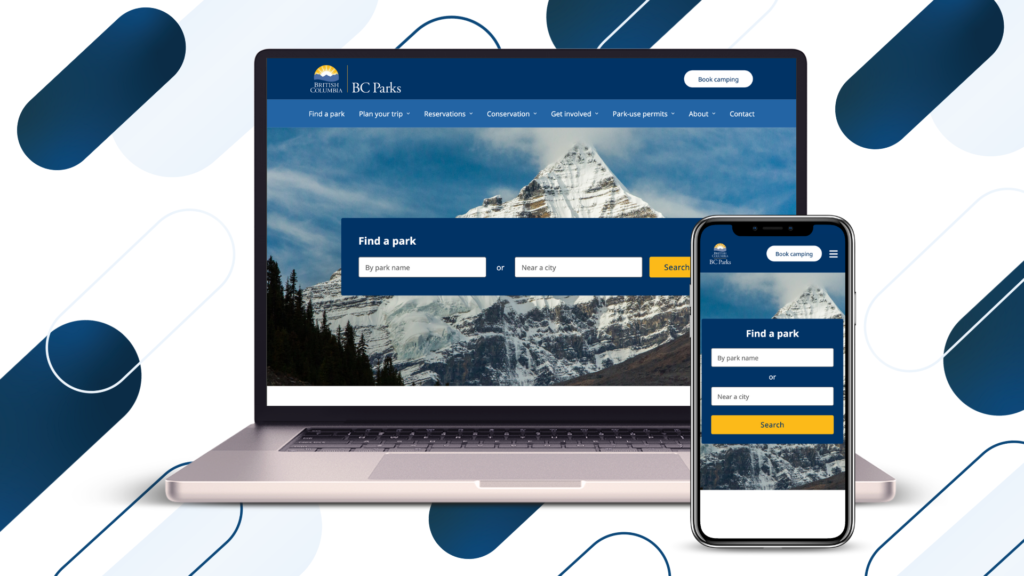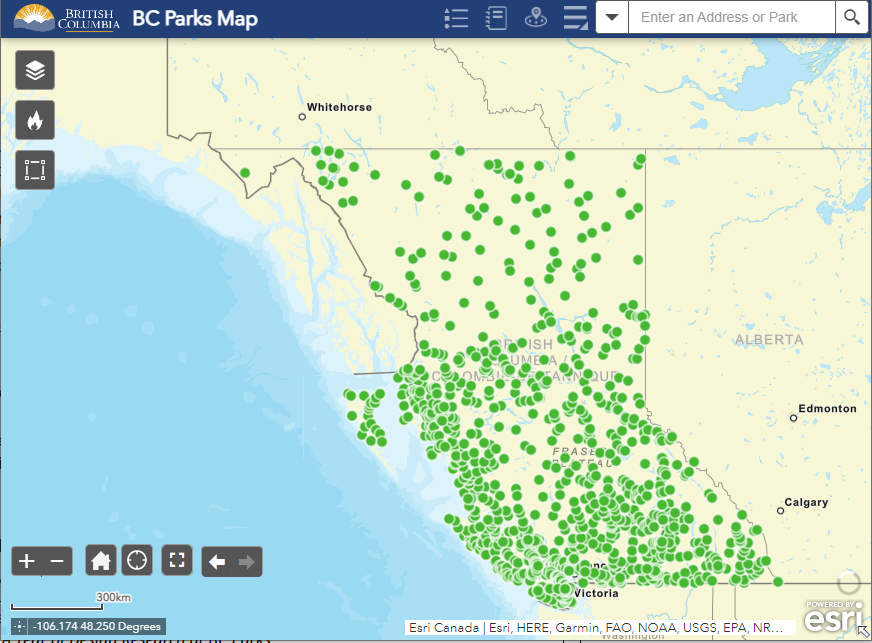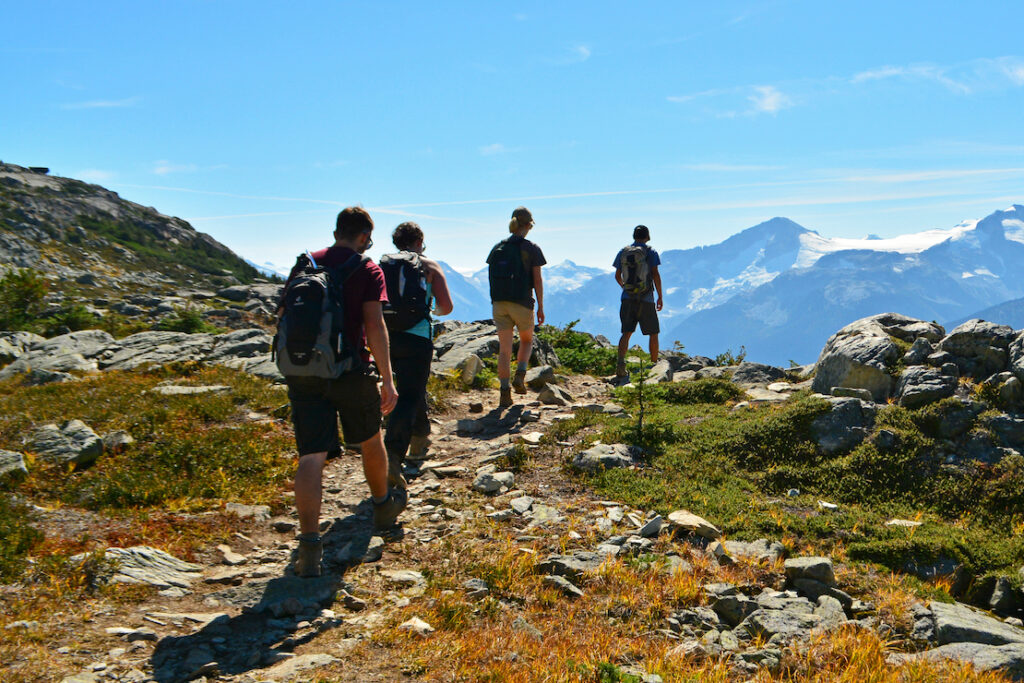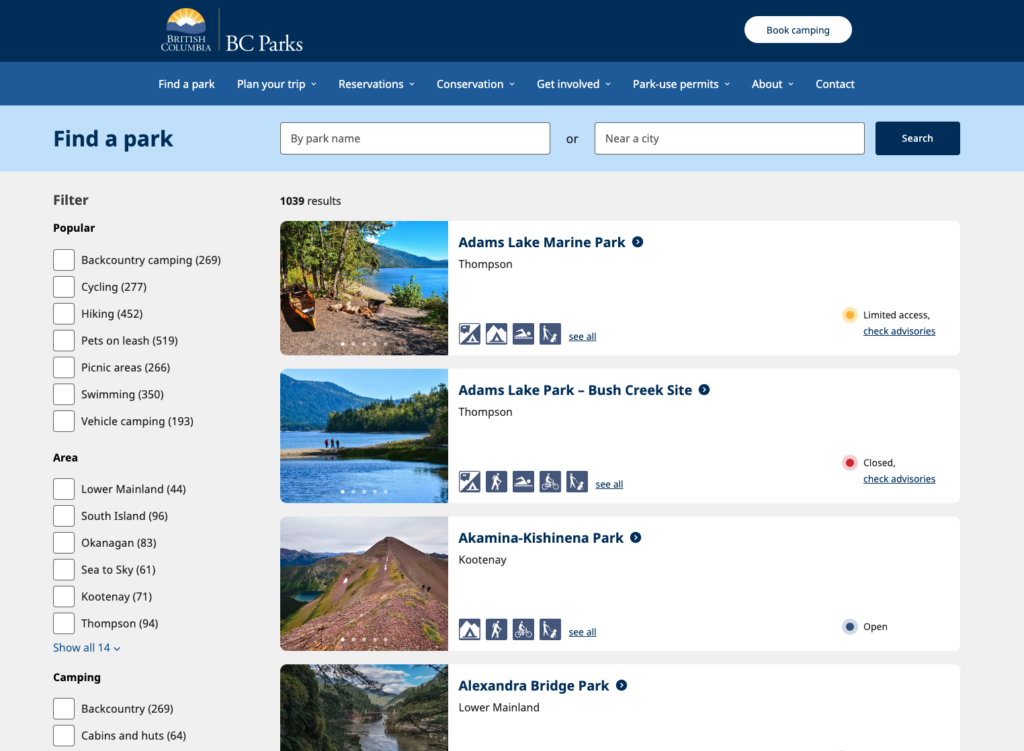How BC Parks gathered feedback to see the forest for the trees
|

Organizations across the BC Public Service have embraced blogging as way to share success stories and highlight the great work happening in their ministries. BC Parks is a great example of this excitement to share. Their blog covers a wide range of topics like inclusive camping, the science of squirrels and updates to the park reservation system.
We’re excited to share another recent post from the BC Parks design research team. Read on to learn how the team found out what the public had to say about the newly redesigned bcparks.ca.
Shaking the trees for feedback
By March 2023 the refreshed BC Parks website had been active for a full year’s camping season, but the design work wasn’t done. Following the practice of designing with people, the BC Parks design research team met with the public post-launch for one-on-one research interviews and usability testing.
In this round of research, we explored these topics:
- How do visitors feel overall about the newly redesigned website?
- What do visitors do, and what tools or websites do they use, when planning a trip to a park?
- What information is important to visitors when choosing a park to visit?
- Is information easy to find and easy to understand?

Participants called the new site “user friendly,” “much better than the last website” and a “big improvement.” But in the name of continuous learning and improvement, the design research team dug deeper.
Seeking the trail
In order to get the full picture of a camper’s planning process, the team mapped their path from start to finish. They determined that searches for new parks generally begin on external websites, and campers come prepared with questions:
“Is the park where I want to be, and does it have the things I’m interested in?” – Research Participant
The first things people want to find out about a park are:
- Where is the park located? Is it close to an area I want to be?
- What does the park look like (by viewing park photos)?
- What hiking trails does the park have?
- What are other people’s opinions of the park?

The participants gave targeted feedback on the improved search function, the choice of park photos, and the layout of info and maps. In the process, the design research team uncovered what was most important to visitors choosing a park:
“I’m specifically looking for activities, the facilities, and a park map.” – Research Participant
People want to know what the park has to offer and are typically looking for:
Camping information
- Dates of operation
- How many campsites
- How many first come, first served campsites
- If there are cell service and Wi-Fi services
- If campgrounds have potable water
- Maps of the campground
What the campground offers
- Trail system information
- Activities (for example, can I hike or paddleboard?)
- How big the park is
- If it is dog-friendly
- Maps of the park and trails
Park overview
- A brief description of the park
- What makes it unique
- Where is it located

Scouting ahead
Following this round of research, BC Parks has reorganized information on park pages, redesigned park search and ensured the feedback will inform future content decisions. The design research team shares more insights and quotes in their full post, so check it out to learn more about the process, explore their findings and even participate in future research sessions yourself.
